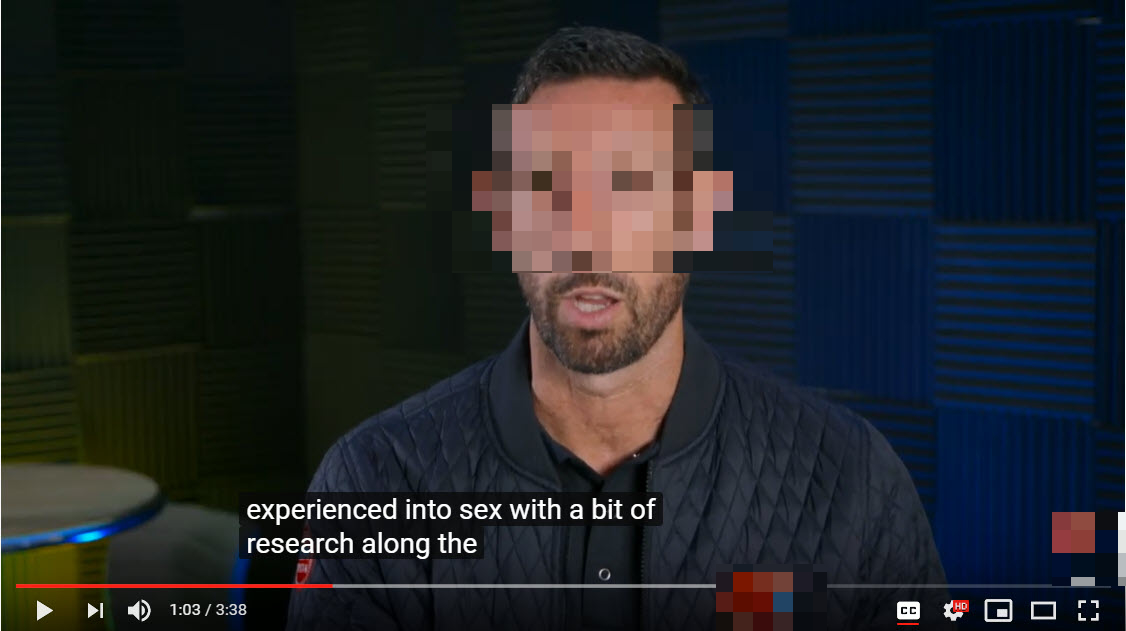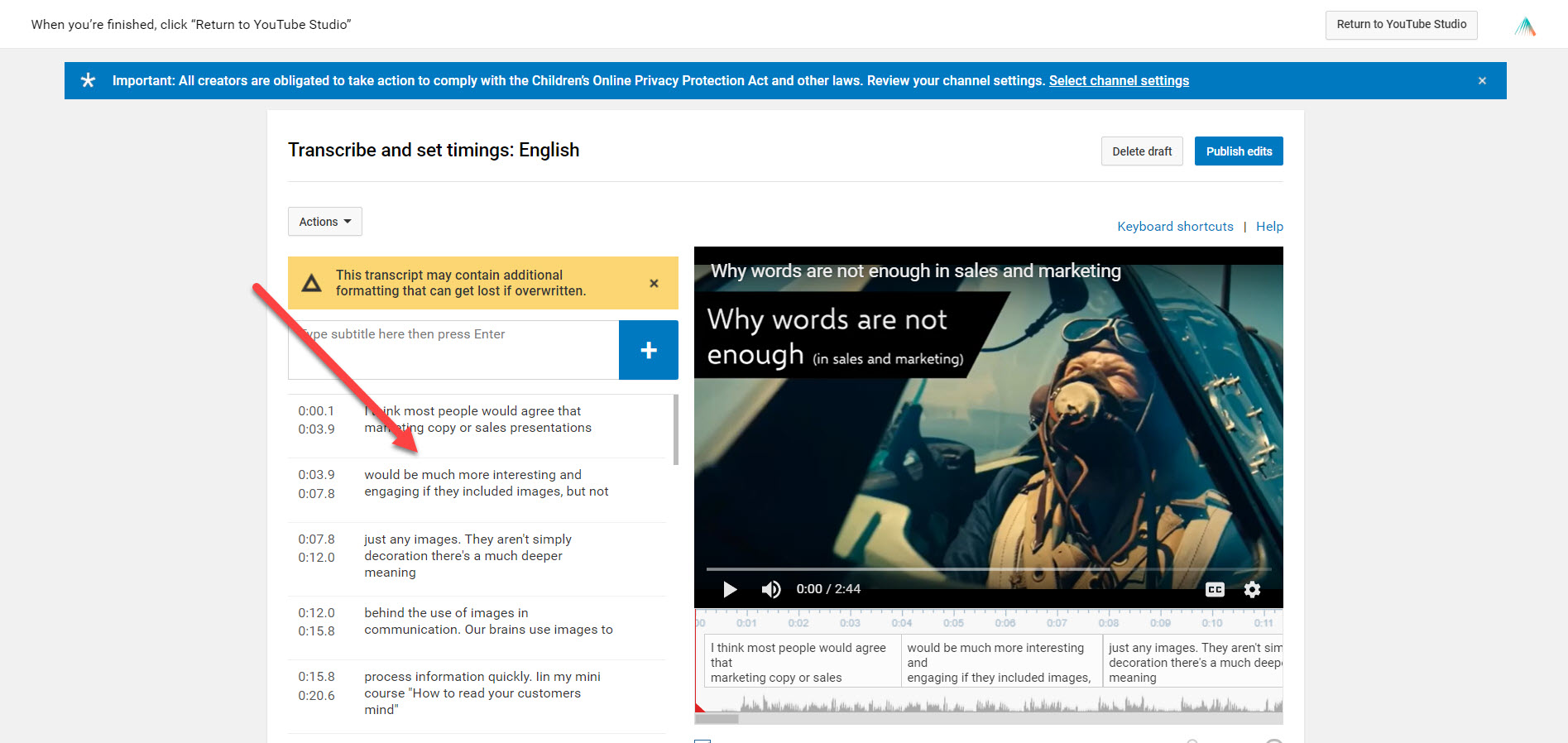How to avoid caption bloopers!

Many people watch video content on their tablets and smartphones in public places or at work where they don’t want to disturb others with sound. The closed captioning (cc) or subtitles feature in many video players means they can read text instead of listening. To add subtitles on video platforms such as Vimeo you have to upload a file often called a .srt or .vtt file containing the transcript and timing. With Youtube the subtitling is automatic. Even better, the Youtube subtitle file can be exported so it can be uploaded to your Vimeo platform or baked-in to your original video using your video editor.
However, a word of caution here. Youtube has great voice recognition but it is far from perfect. The subtitles can sometimes be wrong, sometimes so wrong they are saying something different to the script and sometimes so very wrong they can create amusing (or not) bloopers. Not a problem if the video is for friends. It can be a problem if this is your marketing video, promoting the quality of your work!
Fortunately there is a simple way of checking and fixing these errors. Firstly, upload and publish your video to your Youtube channel. Then in Youtube Studio select the Subtitles option and open the video you want to check and edit.

You will see that Youtube has created one set of subtitles already. You can create multiple language versions and custom versions as well. Select the set to edit and make any changes needed. You can listen to the spoken word as you edit the text in case you are not sure of the words. When this is complete, save and publish the edits. You can also export the .srt file from here under the “Actions” button, so you can use your edited file elsewhere.
That’s all there is to it! You can create .srt files in other applications but why bother – your video is almost certainly going to end up in Youtube even if it isn’t your preferred hosting platform, so you might as well use the features that are freely available.
I prefer to import the .srt back into my video editing program to create a version of the video with baked-in subtitles. I find this more reliable than allowing platforms such as LinkedIn to add subtitles which can end up looking rather odd.
Neville Merritt
